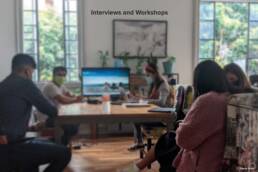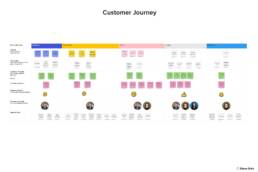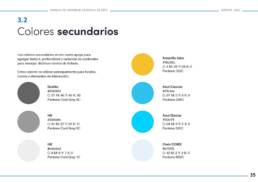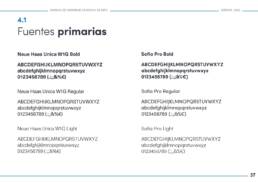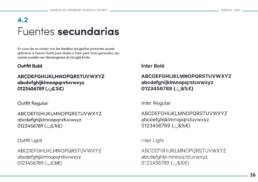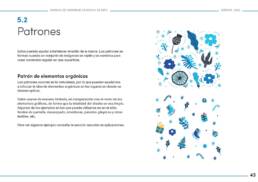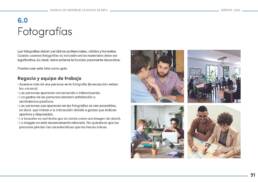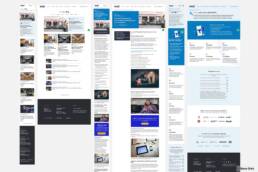A logo redesign request that revealed a greater need: Branding
Company
INTO Consultancy
Date
2022 - 2023
Role
Brand Strategist
Design Director
UI/UX Designer
Illustrator
Graphic Designer
Tools
Adobe PS, AI, XD, AE, Figma
Miro, Monday
Google Forms
Deliverables
BrandBook
Online Brand Platform
Website Design
Brand collaterals
Team
Aledalil Matamoros
Yeisuly Gómez
Diana Ortiz
Initial Problem Discovery
I was the first employee of a digital marketing agency that specializes in helping businesses grow their online presence. I witnessed the agency’s journey from its founding, growth, mistakes, successes, evolution, and transformation. I was both a participant and an observer, which was an exciting and rewarding experience.
One thing remained constant throughout paradoxically: the agency rarely invested in itself, even though it offered services to help businesses do just that. Sure, it seemed like we always had too much work to do, but I observed that this led some potential clients to be skeptical.
So when the owners of the agency approached me with a request to redesign the logo I had designed hurriedly years ago. I listened to their needs and realized that they wanted to reflect the agency’s evolution and transformation. I suggested that we take this opportunity to create a brand identity that would help the agency stand out from its competitors and finally fill that gap that I always observed.
I was pleased that, after so long, the need to define the agency’s basic branding elements was acknowledged, and fortunately my team and I were confident that we could solve the visual part of this project, but for the rest, we would need to learn and work in a multidisciplinary way.
Project Goal
To build a strong and cohesive INTO brand by collecting and generating all the necessary elements, including history, mission, vision and values, personas, customer journey, brand personality, brand differentiation, voice, tone, tagline, and slogans.
Regarding visuals, our objective was to build a strong and cohesive INTO brand by incorporating all the necessary graphic elements, including logo colors, typography, graphic elements, photographs, corporate stationery, a website, and a variety of applications such as cups, notebooks, bags, wallpapers, presentation, and templates for social media.
The Design Process
The Double Diamond represents both flexibility and structure which we needed in order to deliver results. I was able to collaborate with my team and coworkers in the initial stages of the project while also ensuring a specific and structured approach to the design process. We utilized buyer personas and identified pain points and created a comprehensive brand identity and design materials.
Discover
Stakeholders Interviews
Exploratory Research
Workshops
Affinity Maps
Define
Buyer Personas
Customer Journey
Affinity Maps
Card Sorting
Branding Information
Develop
Ideation
Wireframes
Visual Research
Visual Design
Deliver
Finalize Design
Brandbook
Design templates
High Fidelity Prototypes
Discover and Define
During the discovery and definition phases of the design project, we conducted stakeholder interviews and exploratory research to understand the motivations of the owners, as well as gather the business story, mission, vision, and values. Alongside our marketing team, we studied our current clients to develop buyer personas and customer journey maps.
Using workshops and affinity diagramming, we defined the brand personality, brand differentiation, services, voice and tone, and slogan. This process also allowed us to identify pain points and user needs, which informed our design decisions moving forward.
Develop
During the development phase, my team, Aly and Yei, and I worked together with mood boards to explore various visual styles and elements that were in line with the previous research. Based on this, I began working on a Stylescape, which is a material that helps establish the brand’s overall look and feel. We presented this to the entire team to ensure that everyone was aligned with the design direction.
Once we made the necessary adjustments to the Stylescape, we began working on several projects simultaneously. While Yei and Aly worked on several logo options and mockups, I worked on wireframes for the website and brand guideline site, as well as basic master pages for the printed Brand Manual.
When we had logo versions that were sufficiently developed, we presented them to the team. Although we already had a version that we considered to be best aligned with the brand’s personality, we conducted an internal survey to understand other people’s perceptions. Interestingly, the survey also favored the logo that we considered to be the best option.
The logo design followed a process that can be visualized in the example. You can see one of the first versions designed by Aly, but after applying some adjustments to align with the brand’s personality and design direction, the logo became more polished and refined. This was in line with the brand’s personality that we had already defined at this stage.
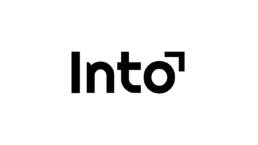

Deliver
THE RESULT
Branding
In addition to the logo, we created a comprehensive graphic identity system that comprised logo usage guidelines, a color palette with specific names, typography, a range of icons, patterns, photography, graphics, and recommendations for presentation and website design. We also included all the research and work content we did for creating the brand, such as the company’s story, mission, vision, values, differentiators, personality, voice, and tone.
Aly focused on refining the logo and creating various applications, including social media templates and animations. Meanwhile, Yei skillfully utilized the established layout in the InDesign file from the previous stage to complete the editorial design of the document.
UI Design
Website
With the key elements of the agency’s brand in mind, I initiated the website design process by exploring its architecture and creating a sitemap, utilizing card sorting to precisely define the service section. Once we had a solid foundation, we presented the initial wireframes to the stakeholders and agency members for feedback. Following that, I developed high-fidelity prototypes. The website was designed to be scalable and is currently under development.
Additional problems and their solutions
An alternative to the Branding Guidelines Platform.
During the planning process, I detected that the best way to make available for everyone the Brand Guidelines would be through an online platform where both employees and external collaborators could consult all the guidelines and also download assets, such as presentations, word templates, and logos in all their versions, etc.
Despite the initial agreement that the platform would be delivered on time, it became clear that the development team was facing challenges due to an overabundance of client projects that took precedence over internal work. After assessing the situation, I concluded that meeting the required deadline for the website’s completion would not be feasible.
I decided to create a SharePoint site to share materials collaboratively. Although it didn’t have the interface or ease of use I had planned, it still served its purpose and was widely used, solving one of the problems that arose.
During challenging projects, even if your team has proven their value through their work, they may still doubt themselves.
The project was significantly larger than the size of our team. This often resulted in my team feeling pressured due to the responsibility of creating the branding for the agency and the accelerated learning required to execute new tasks.
An example of a challenge we faced was in designing materials that met the requirements of the graphic system. I found that difficulties were due to a lack of understanding of the fundamental elements that generate consistency. As a result, I perceived frustration and uncertainty regarding the specific adjustments that I was requesting.
To address this, I reminded my team of how large the process had been, and how good their work had been until that point. I explained to the best of my ability what consistency meant and how we could achieve it. I also asked for patience as I was trying to put all the pieces together was complex. In the end, although creating this system was challenging, it ultimately led to a sense of satisfaction upon learning so much and completing the project. We acquired new skills and were able to solve a big problem as a small team.
Insights gained from the project
- I trusted my diagnosis, which was that the agency did not require a logo redesign, but rather a branding approach through active listening and careful consideration of real needs. This involved changing the owners’ minds, but I was confident in my assessment.
- During this project, although I conceptually knew that I didn’t need to know everything to tackle a problem, I proved that by selecting and learning to apply a process that involved breaking down tasks into manageable chunks, and then studying and learning new concepts for each of these pieces, I could work together with my team to successfully deliver the project.
- Furthermore, I discovered that adapting processes to address specific issues is essential as each problem presents unique challenges. Since this was not just a design project, I utilized different resources and tools to ensure a well-rounded outcome.
- Each step of the project taught me something new. I learned about creating not just visual aspects of branding, but also the brand fundamentals and editorial guidelines. As part of it, I had to interview and conduct workshops with the owners and colleagues from various departments to gather information and insights.
- Also, I felt more comfortable moving with my team in uncertainty and to change our minds to achieve completing tasks and goals that otherwise would not have been completed, even if this meant sacrificing refinement for results.
- As this was an internal project, we were not limited by budget, but rather by time. This allowed me to work on aspects that I would love to explore with all the projects, but it’s not possible.

